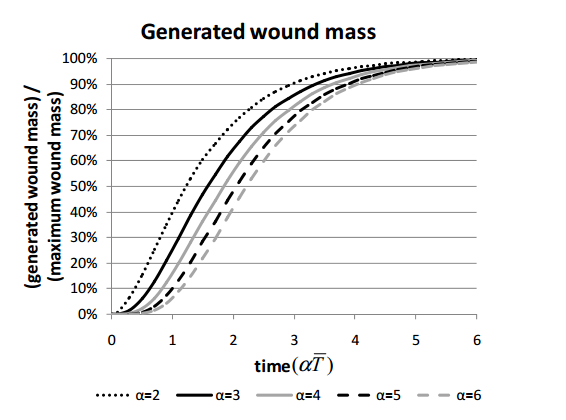Energy Conservation and the Puzzle of the Body’s Healing Rate
Wound healing is a hugely complex phenomenon that all creatures devote significant resources to. So the question of how wound healing can be made as quick and efficient as possible is clearly important.

One of the fundamental puzzles is why wound healing proceeds so slowly when cells by themselves grow very quickly. For example, fibroblast cells, which play an important role in wound healing, can double in number just 10 hours when grown in a petridish in ideal conditions. That’s clearly much faster than wounds heal in the body; why the difference?
Today, Peter Apell at Chalmers University of Technology in Sweden and a couple of pals say they’ve worked out an answer using a rather unconventional approach. These guys study wound healing from the point of view of energy conservation. They ask what basic restrictions the laws of physics place on wound healing and what kind of insights this gives into an otherwise hugely complex process.
They begin by creating a mathematical model of energy used by the metabolism in processing the material required to fill the wound cavity. This can be divided into three parts: the energy required for the immune system to combat infection, the energy required to maintain the existing cell tissue and finally the energy required to grow new tissue, which depends on the ratio of fat and protein.
This third fraction is the crucial factor. Apell and co calculate that growing new cells requires, on average, about 20 kiloJoules per gram of new tissue grown. “This means in physical terms that wounds acts like substantial energy sinks,” they say.
But the amount of energy available is limited by the body’s total energy budget which cannot be exceeded or even tapped too heavily.
Appel go on to calculate how much energy to takes to move the necessary resources to the wound cavity and compare this to the energy required to run the metabolism as a whole, which is characteristic of the creature itself.
With all this taken into account, their model predicts a wound healing time of around 10 days. “This is definitely in line with measured healing times,” they say.
They use the model to make a number of other predictions about factors such as the rate of wound closing and so on. They then test their predictions on rat models of wound healing an say they fit well.
The result is an interesting insight into a hugely complex biological process. Amazing what the laws of physics can do sometimes!
Ref: arxiv.org/abs/1212.3778: Physics of Wound Healing I: Energy Considerations
Keep Reading
Most Popular
Large language models can do jaw-dropping things. But nobody knows exactly why.
And that's a problem. Figuring it out is one of the biggest scientific puzzles of our time and a crucial step towards controlling more powerful future models.
How scientists traced a mysterious covid case back to six toilets
When wastewater surveillance turns into a hunt for a single infected individual, the ethics get tricky.
The problem with plug-in hybrids? Their drivers.
Plug-in hybrids are often sold as a transition to EVs, but new data from Europe shows we’re still underestimating the emissions they produce.
Stay connected
Get the latest updates from
MIT Technology Review
Discover special offers, top stories, upcoming events, and more.